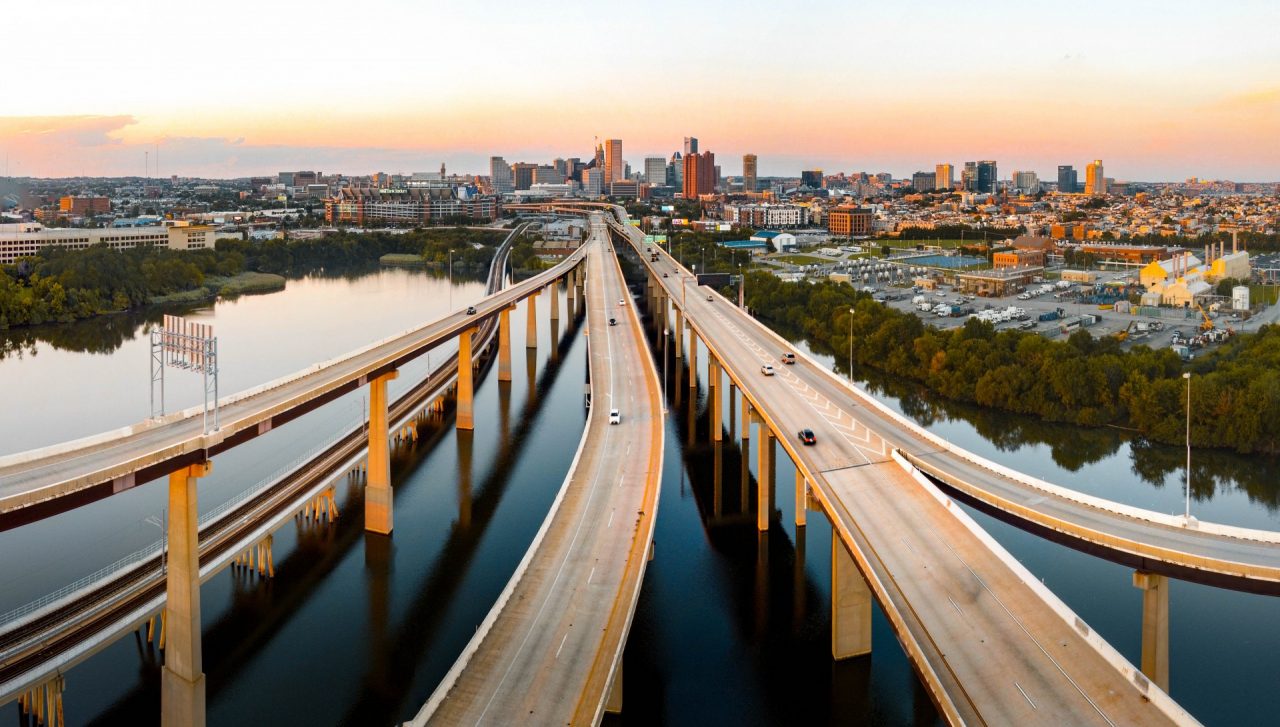The long-held dream of a Maglev train connecting Washington D.C. to Baltimore is coming true, one step at a time. The road – or railroad track – ahead is a long one. Most recently, on January 22, the Federal Railroad Administration and the Maryland Department of Transportation announced a 90-day window for stakeholder discussions of the project’s potential environmental impact. On the horizon is a high-innovation, high-speed train covering the 40 miles (61 kilometres) between Washington D.C. and Baltimore in a mere 8 to 15 minutes. The goal is to eventually extend the line to New York City.
Apart from revolutionizing East Coast transportation by connecting two of the region’s most populous and emblematic cities, the project has already had positive implications for the development of the Baltimore-D.C. urban area, home to about 10 million people.
Maglev: the high-speed train in numbers
While approval at the U.S. federal level is still pending, the project’s technical details are already public. Once the authorization process is complete, the project’s first phase is expected to take 10 years, with a total investment between $13.8 billion and 16.8 billion (€11.4 billion-€13.9 billion).
Maglev train technology (short for “magnetic levitation”) facilitates high speeds of over 300 miles (480 kms) per hour. Japan was the first country to develop Maglev technology. Its Tokyo-Nagoya line is still under construction; a link to Osaka is also underway, but not likely to be operational before 2045.
The Federal Railroad Administration estimates that the D.C.-Baltimore project could create up to 195,000 jobs, with about $10 billion (€8.2 billion) of the total investment going toward employee wages.
These substantial human resources will also be used in the construction of three stations: the D.C. and Baltimore terminuses, along with a midway hub at Washington International Thurgood Marshall Airport.

Washington D.C.-Baltimore: project history
The impetus to build a line using innovative Maglev technology dates back to 2001, when the Federal Railroad Administration published an initial Maglev Deployment Program and outlined which states could host this type of infrastructure. In addition to Maryland, California, Florida, Georgia, Louisiana, Nevada, and Pennsylvania were all named. Backing from the Maryland Department of Transportation and the Maryland Transit Administration put the wheels in motion for a Maryland-based project.
Although an initial analysis of the project’s environmental impact took place in 2007, details and costs were not finalized for another decade. In November 2015, the Maryland Public Service Commission approved the project, entrusting it to the private company Baltimore Washington Rapid Rail. These were the stepping stones leading up to the current phase, in which project details are publicly accessible and operations have gotten underway.
A regional future shaped by sustainable mobility
One goal of the new train line is to relieve congestion in this region, where increased population density in recent years has been disproportionate to infrastructural developments.
Between the national capital of Washington D.C. and the city of Baltimore, the richest and one of the most populous urban areas of the United States has emerged. Some 10 million residents call the area home and need extensive, modern infrastructural networks to move around.
Addressing those same needs, the Maryland Board of Public Works recently approved an initial $250 million (€207 million) investment on another rail transport project, in addition to the ambitious Maglev initiative. Known as the Purple Line light-rail project, this light train will likely be carried out through a public-private sector partnership, if the state government’s plan comes to fruition.
The light-rail project could cost up to $5.6 billion (€4.6 billion), but its impact will be significant: the line is slated to cover 21 stations in 16 miles, from Bethesda (Montgomery County) to New Carrollton (Prince George’s County). Its route will intersect with Amtrak trains and local bus lines.
This is another key development for sustainable mobility that will help modernize transportation in and around the U.S. capital.

